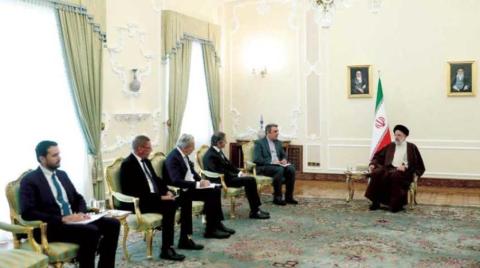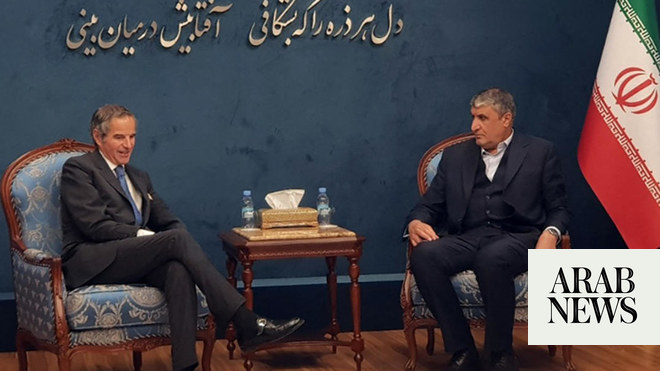
The head of the UN's nuclear agency said Saturday that Iran pledged to restore cameras and other monitoring equipment at its nuclear sites and to allow more inspections at a facility where particles of uranium enriched to near weapons-grade were recently detected.
But a joint statement issued by the International Atomic Energy Agency and Iran's nuclear body only gave vague assurances that Tehran would address longstanding complaints about the access it gives the watchdog's inspectors to its disputed nuclear program.
IAEA Director General Rafael Mariano Grossi met with Iranian President Ebrahim Raisi and other top officials in Tehran earlier Saturday.
“Over the past few months, there was a reduction in some of the monitoring activities" related to cameras and other equipment “which were not operating,” Grossi told reporters upon his return to Vienna. “We have agreed that those will be operating again.”
He did not provide details about which equipment would be restored or how soon it would happen, but appeared to be referring to Iran's removal of surveillance cameras from its nuclear sites in June 2022, during an earlier standoff with the IAEA.
“These are not words. This is very concrete," Grossi said of the assurances he received in Tehran.
His first visit to Iran in a year came days after the IAEA reported that uranium particles enriched up to 83.7% — just short of weapons-grade — were found in Iran’s underground Fordo nuclear site.
The confidential quarterly report by the nuclear watchdog, which was distributed to member nations Tuesday, came as tensions were already high amid months of anti-government protests in Iran and Western anger at its export of attack drones to Russian forces fighting in Ukraine.
The IAEA report said inspectors in January found that two cascades of IR-6 centrifuges at Fordo were configured in a way “substantially different” to what Iran had previously declared. That raised concerns that Iran was speeding up its enrichment.
Grossi said the Iranians had agreed to boost inspections at the facility by 50%. He also confirmed the agency's findings that there has not been any “production or accumulation” of uranium at the higher enrichment level, “which is a very high level.”
Iran has sought to portray any highly enriched uranium particles as a minor byproduct of enriching uranium to 60% purity, which it has been doing openly for some time.
The chief of Iran’s nuclear program, Mohammad Eslami, acknowledged the findings of the IAEA report at a news conference with Grossi in Tehran but said their “ambiguity” had been resolved.












